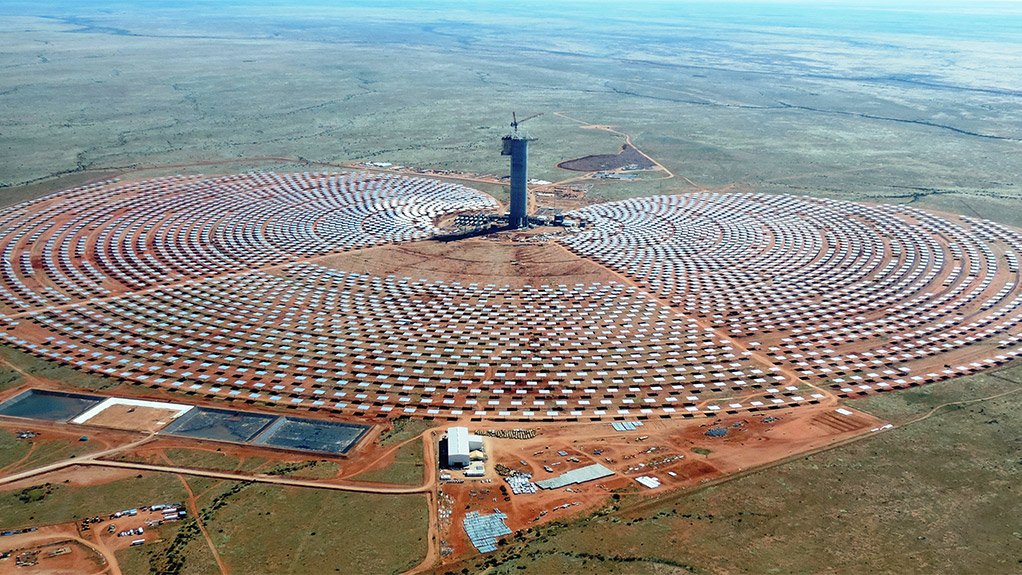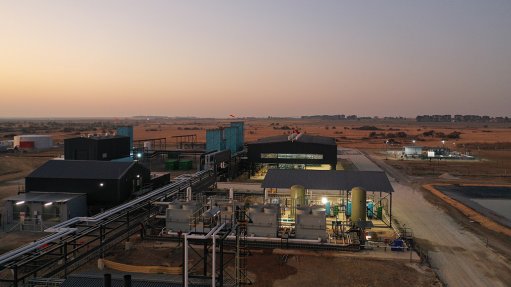CSP towers’ impact on birdlife lower than expected, can be reduced
A study conducted by Stellenbosch University’s Faculty of AgriSciences has found that the 50 MW Khi Solar One facility, near Upington, is impacting on the surrounding bird life, but not to the extent expected.
It is also possible to reduce the impact that concentrating solar power (CSP) towers might have on bird populations by managing the infrastructure well, especially during downtime when it is not generating power, says the faculty’s HP van Heerden, after completing research at South Africa's only CSP tower.
Van Heerden’s study was the first to focus on birdlife around the Khi Solar One facility, which was commissioned in 2017.
“When considering renewable energy options, one must always consider the pros and the cons for the environment and the impact it may have on the plants and animals,” Van Heerden said of the rationale behind his study.
He took his lead from similar studies previously done in the US and Spain. He did surveys on the solar tower site of 315 ha, as well as on adjacent open veld. The facility stands amid typical Nama Karoo veld, in an area that receives around 150 mm of rain a year.
Throughout two seasons, he recorded 57 different bird species in total and 2 380 individual birds. In winter, 49 species were recorded, none of which were of conservation importance.
The only birds of conservation importance noted in summer were lanner falcons, which is a species classified as “vulnerable”.
About 53 species were observed in the adjacent veld, compared with 45 species observed around the solar tower itself.
Most species flew no higher than 10 m, the exception being pied crows, Egyptian geese and korhaan.
Van Heerden stated that the birds were less inclined to breed on the site and around the buildings. On the site itself, four sociable weaver nests and those of a korhaan, two dove species, a Namaqua sandgrouse and a southern common fiscal were recorded.
The erection of the solar tower had an influence on the composition of bird species typically found in the area.
Evaporation ponds attracted water birds such as flamingos which had not previously been found on the farm where it had been built. Wood- and shrubland species, as well as species usually found in urban areas, are nowadays found in greater numbers around the tower area than in the adjacent veld.
THE DOWNSIDE
Van Heerden also surveyed the area for possible fatalities and injuries, noting 324 injured or fatally injured birds, representing 34 species, around the solar tower.
Of these, 285 were found inside the heliostat area (the so-called solar field) and the rest around the power generation unit and the evaporation ponds.
About 60% of incidences were caused by birds colliding with structures, while 14% of birds were singed by the heat.
Most of the dead birds were seed-eating resident birds like the red-billed quelea and lark-like bunting which are fairly common in the area.
Apart from one lanner falcon and one white pelican, no birds of conservation importance were among the casualties.
Camera traps showed that some of the dead birds were eaten by pied crows, Cape foxes and yellow mongooses.
“Most birds collided against structures in the area where the freestanding heliostats are, and mostly along the lower quarter of these structures, roughly 3.2 m above the ground, involving the last two panels of each heliostat,” Van Heerden explained, adding that that was at about the normal flight height of birds like red-headed finches and lark-like buntings.
Most incidents occurred early in the morning or around sundown when birds are most active.
According to Van Heerden, the collisions possibly occurred when the heliostats stand at a 90° vertical position for a limited period during sunrise and after sunset.
“It creates the illusion of an unbroken landscape and can completely confuse the birds,” he reasons.
Most often it was migrating birds and species that hunt their prey in the air that were fatally singed during summer months by the so-called solar flux – a concentrated beam of sunlight that radiates from the heliostats past the central receiver and can reach temperatures up to 800 ˚C.
“The bright light radiating from the mirrors of the towers can attract insects and, in the process, also insect-eating birds.
“When something such as a moving bird flies through the solar flux, it can be singed because the sunlight from the heliostats collides with an object and is converted into thermal energy.”
Most of the singeing incidents were recorded during a time that the heliostats were not in use, owing to power plant downtime. The heliostats stood in a standby position, which resulted in a kind of halo effect and singeing (solar flux) in the air above the tower.
MANAGING FACTORS
Van Heerden cites media reports from the US claiming that up to one bird per minute – which would amount to 28 000 birds a year – could die owing to solar towers. However, his findings do not support this claim.
“Based on data from the current study, these claims seem exaggerated,” agreed Professor Karen Esler, one of Van Heerden’s study leaders and chair of Stellenbosch University’s Department of Conservation Ecology and Entomology.
“For perspective on the real impact of solar towers, one should compare bird fatalities around the site with those caused by other human activities in the area, such as farming, mining or the road network,” she pointed out.
A study conducted in 2014 estimated that between 98-million and 980-million birds die annually in the US after colliding into buildings or windows. Up to 3.7-billion are caught by cats, and between 89-million and 340-million die because of traffic-related incidences.
“Some impact by solar towers on the environment is almost unavoidable, but can be minimized if managed right,” said Van Heerden.
He recommended that operators of CSP facilities not position their heliostats at exactly 90° during early mornings and late afternoons when birds are most active.
Van Heerden adds that the intensity of the concentrated energy or solar flux radiating out above solar towers could be reduced when the heliostats are in standby position and not operational.
Heliostats should preferably be set in a horizontal position when solar power is not being generated by the facility.
Article Enquiry
Email Article
Save Article
Feedback
To advertise email advertising@creamermedia.co.za or click here
Comments
Press Office
Announcements
What's On
Subscribe to improve your user experience...
Option 1 (equivalent of R125 a month):
Receive a weekly copy of Creamer Media's Engineering News & Mining Weekly magazine
(print copy for those in South Africa and e-magazine for those outside of South Africa)
Receive daily email newsletters
Access to full search results
Access archive of magazine back copies
Access to Projects in Progress
Access to ONE Research Report of your choice in PDF format
Option 2 (equivalent of R375 a month):
All benefits from Option 1
PLUS
Access to Creamer Media's Research Channel Africa for ALL Research Reports, in PDF format, on various industrial and mining sectors
including Electricity; Water; Energy Transition; Hydrogen; Roads, Rail and Ports; Coal; Gold; Platinum; Battery Metals; etc.
Already a subscriber?
Forgotten your password?
Receive weekly copy of Creamer Media's Engineering News & Mining Weekly magazine (print copy for those in South Africa and e-magazine for those outside of South Africa)
➕
Recieve daily email newsletters
➕
Access to full search results
➕
Access archive of magazine back copies
➕
Access to Projects in Progress
➕
Access to ONE Research Report of your choice in PDF format
RESEARCH CHANNEL AFRICA
R4500 (equivalent of R375 a month)
SUBSCRIBEAll benefits from Option 1
➕
Access to Creamer Media's Research Channel Africa for ALL Research Reports on various industrial and mining sectors, in PDF format, including on:
Electricity
➕
Water
➕
Energy Transition
➕
Hydrogen
➕
Roads, Rail and Ports
➕
Coal
➕
Gold
➕
Platinum
➕
Battery Metals
➕
etc.
Receive all benefits from Option 1 or Option 2 delivered to numerous people at your company
➕
Multiple User names and Passwords for simultaneous log-ins
➕
Intranet integration access to all in your organisation



















